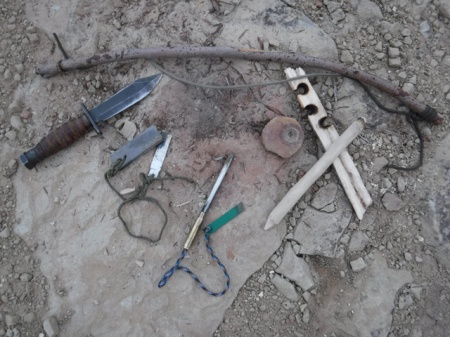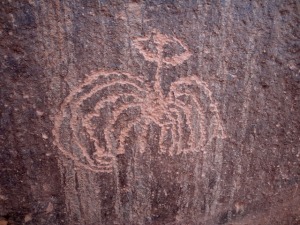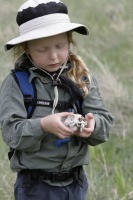My son and I are always testing ourselves, no matter what we do. We make everything we can into a learning experience, do our best to find better ways to do things, and to get better at what we do. It could be a physical test, by turning a 5 mile canyon walk into a 15 mile walk for example. Or a skills test- I might let Nicolai do the packing for a trip, have him navigate and route-find as we hike, or have him get our stove set up or fire made for the night’s dinner. Making fire is a classic test for us, something we can never practice enough. We use many different methods- a single match, a lighter, a metal match (a rod composed of a metal alloy known as ferrocerium) and tinder, a metal match and magnesium shavings, or a bow and drill. We make it a point to practice all these techniques in varying temperatures, different levels of wind, with different moisture levels, and types of tinder and fuel, essentially training for any possible conditions that we can. This is the way we get better, and master our skills.
Much can be said about fire making techniques and tools- everyone has their favorite methods, and opinions of different methods, not to mention opinions of countless other variables- how many methods you should carry with you, whether or not to carry natural tinder or a commercial variety, a small lighter or a large one, a book of matches or strike anywhere stick matches. These are all questions that each person has to work out for themselves. No matter how many books you read, how many blogs you visit, or how many Youtube videos you watch, it all boils down to your skill and comfort levels. If you can make fire in a few seconds with your eyes closed by rubbing two sticks together, you probably don’t need to carry 3 or 4 different methods with you. If you have trouble lighting a fire with matches, you should probably have a large, well-stocked fire kit with plenty of redundancy.

Three fire making methods- bow and drill, metal match, and magnesium block with imbedded ferro rod. No matter what your favorite method, it is important to become proficient. Being skilled in many fire making methods just adds insurance.
Start With the Basics
Fire making, like any skill, begins with practice. Depending on the method or methods you choose, it could be lots of practice. The key is to learn the skill before you need it- practice and become proficient with with the basics first- starting with matches or a lighter, then moving on to the metal match, the fire steel, bow and drill, hand drill, or fire plow. Did I mention you need to practice fire making? And if you decide to carry and use one of the “primitive” methods at the end of the preceding list, you need to practice even more- don’t wait until your life depends on it and assume you can work out how to use a fire steel, flint and charcloth. It may be too late.
Start with considering the placement of your fire- think about where you want to build it. Ask yourself if this is the right place for it now, overnight, and tomorrow. Think about wind and weather, what is overhead (remember the lessons of Jack London!), and if this is where you want to sleep if it is for the night. Consider reflectors, natural and those you put in place. Are there rocks or a rock face to direct the warmth towards you? Finally consider safety, dry grasses and branches for example and Leave No Trace principles. Try not to build a raging, night-long fire where its existence will be visible for years.
No matter which method you use to get that all-important spark, all fire-starting methods require a tinder bundle for your spark, kindling to build it up, and fuel to feed the fire. Spending the time to create the perfect tinder bundle will insure success. Collecting and preparing kindling and a sufficient pile of fuel for your fire may mean the difference between being warm, and starting over.
Where we operate in the Four Corners region bark from the Juniper is the best tinder available. It is easy to find and remove from any Juniper we come across. Our second choice is the hairlike, inner material from dry cottonwood bark. Chunks of dry cottonwood bark are usually found at the base of larger cottonwood trees; look for those that have large, dead branches. Either material should be twisted in the hands, or pounded between a couple of rocks to break it up and create the fine powder that is so easy to ignite. Of course there are countless other materials that can be used for a tinder bundle. The idea is to find something that can be reduced to fibers, and pounded nearly into powder. Other desert plants to look at include sagebrush, rabbitbrush, and some grasses if they are fine and very dry. After making your tinder bundle, simply hold your match or lighter underneath, place the spark from your bow and drill or charcloth into the bundle, or direct the sparks from your metal match into the bundle. Once you’ve reached this point the rest is fairly easy- slowly and carefully feed the fire with tinder, kindling and then larger fuel until it reaches sufficient size for your needs.
For more on fire making in general, see our Learning the Basic of Fire page. Also see our page on the Metal Match and Magnesium Fire Starter. Visit the Desert Explorer website to peruse other skills topics as well as the highlights of some of our adventures.




 Posted by desertexplorer
Posted by desertexplorer 











